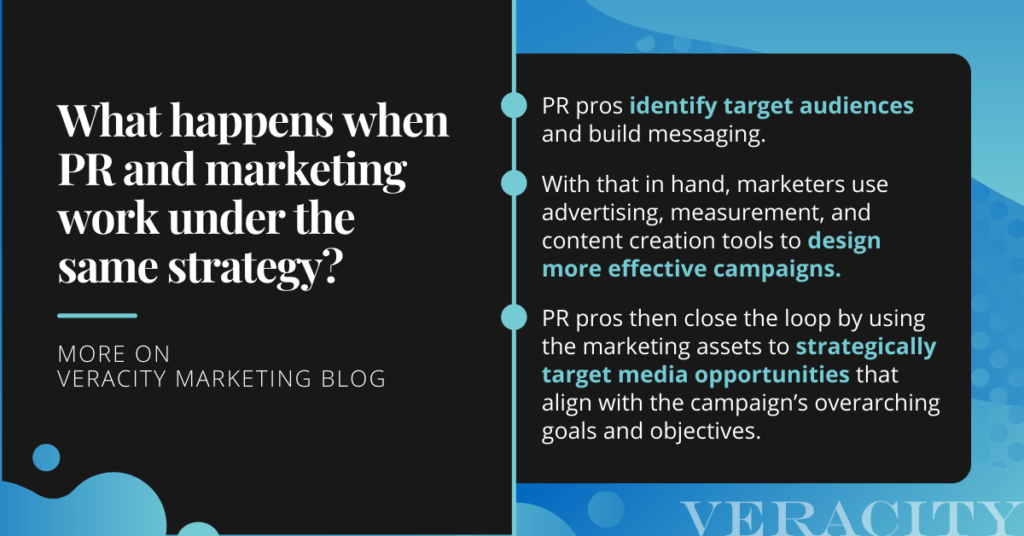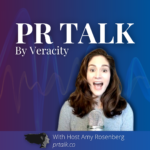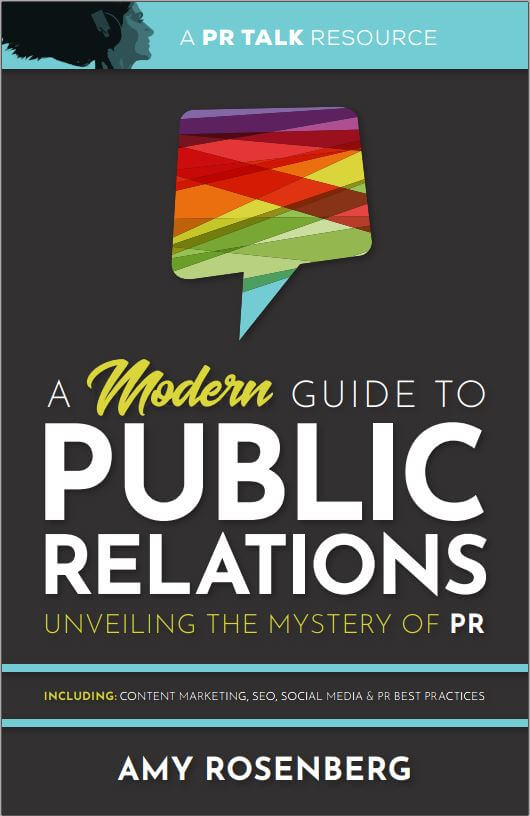Moving All Disciplines Under the Digital Strategy:
Why PR and Marketing Should Always Collaborate
As humans, we naturally seek out patterns and similarities to interpret and categorize the world around us. One hundred thousand years ago, these instincts allowed us to survive in a harsh and hostile world. As humans evolved, we carried this natural tendency to organize the world by its perceived sameness into the societal structures we created — often with negative consequences.
This is undoubtedly true at work. Leaders separate employees by job role, responsibility and discipline. Sales is there. Human resources is over here. Marketing works upstairs. Production stays out back. In many instances, each group pursues unique missions and goals underneath its own chain of command. Frequently, one group has no idea what the other groups do all day or how they achieve their results.
While this innate need to organize served us well as hunters and gatherers, it often gets in our way in a more complex world. Separating people by roles, responsibilities or disciplines often prevents them from realizing the benefits that come through collaboration. Setting up artificial silos also limits opportunities for building organizational efficiency and effectiveness. Even worse, competing silos often find themselves working at cross purposes that undermine their objectives and broader organizational goals.

A New Evolutionary Phase
Humanity is in the midst of another evolutionary period as we move into the digital age. As more of our collective work lives online, the artificial boundaries that separate us become increasingly restrictive. It’s why business leaders pay so much attention to consultants who promise to help destroy the silos within their organizations. To some, this talk may seem like the corporate flavor of the month. However, real opportunities exist for removing existing barriers to align seemingly distinct disciplines underneath a unified mission. This is particularly true when it comes to the boundaries separating public relations (PR) and marketing.
Digital is Everywhere
Before the internet, marketing professionals drove sales through print, radio and television advertising. To gain insight into what their audience wanted, marketers performed extensive focus group work alongside product research and testing. And apart from sales, circulation and TV ratings, marketers had little information to judge the effectiveness of their activities once they released their campaigns into the wild. As a result, marketing costs were often massive, unwieldy and unpredictable elements of a company’s annual budget. You know the quote from John Wanamaker (1838-1922) “Half the money I spend on advertising is wasted; the trouble is I don’t know which half.” Oh, how things have changed.
Today, digital channels are always front and center in marketing campaigns. What’s more, marketers can use digital tools to precisely target an audience based on their online behavior while gaining near-instant feedback on campaign performance. Under these conditions, marketers can attach precise results to advertising activities, so business leaders can accurately predict their return on their advertising dollars. It’s understandable, then, why many business leaders would let marketers do what they do and push everyone else off to the side.
PR is More Than Just Media Relations
In many organizations, PR sits in a separate silo removed from marketing entirely. Once upon a time, PR focused primarily on media relations to gain increased exposure for their clients through media mentions. So maybe it made sense to keep these two disciplines separated. However, as digital channels began to usurp the legacy media’s audience, PR professionals expanded their work into the digital realm just like their marketing counterparts. While media exposure is still an important goal, PR now also focuses on bolstering a company’s SEO presence and using digital tools like social media, email, podcasts and video to boost an organization’s visibility.
PR professionals have always had a keen understanding of their target audience. Back in the media relations days, the audience was a key determining factor for the media opportunities PRs pursued. Today, picking the right audience is just as important. But PR professionals now have access to the same digital tools marketers use to target their audiences with pinpoint accuracy.
Breaking Down the Barriers
The digital transformation has pushed PR and marketing workers closer together than ever before. But, some organizations still see these as distinct and separate disciplines, even though they pursue the same goal using many of the same methods. Let’s look at both areas a little closer.
At its core, marketing is about raising an organization’s profile among a targeted audience. The end goal often differs. Sometimes it’s a sale. Sometimes it’s a lead. Other times it’s a donation or a new client or customer. But no matter the transaction, the process always begins by reaching out to the public with some kind of strategic message.
Like marketers, PR practitioners use techniques like content marketing to raise an organization’s profile with a strategically chosen audience. PR professionals are masters at developing messages that resonate, so the work they produce drives results. What makes this group different is that they can also incorporate media outreach into a broader marketing strategy, which is a skill many marketers lack.
All Marketing is PR
In a digital world that shares many of the same tools, all marketing activities become some form of PR. That’s why erecting artificial walls between the two disciplines makes little sense. Organizations that tear down these walls and allow PR and marketing to collaborate under a unified strategy see much better results than those that don’t.
When marketing and PR workers escape their silos and begin fully collaborating under the same strategy, amazing results will follow. PR begins the process by identifying target audiences and building messaging. With those critical elements in hand, marketing professionals can use advertising, measurement, and content creation tools to design more effective campaigns. PR professionals then close the loop by using the resulting marketing assets to strategically target media opportunities that align with the campaign’s overarching goals and objectives. Under this unified model, PR can drive every element of an organization’s digital marketing outreach.
No more confusion. No more turf wars. Instead, it’s a group of communications professionals using their talents and tools to move the needle for the company.
Cohesive Units Bring Stronger Results
It’s finally time to eliminate the walls separating your marketing endeavors. So long as your PR strategy is in tune with your target audience, it should be incorporated into all digital activities, from content marketing to social media to email marketing to video and more.
Our instinct was to categorize these activities as different all those years ago, thanks to millions of years of evolutionary training. However, that same evolutionary principle has now made PR and marketing more alike than different. So, why hold on to the old way of thinking? Unleash these disciplines to work together and see what you can achieve.









